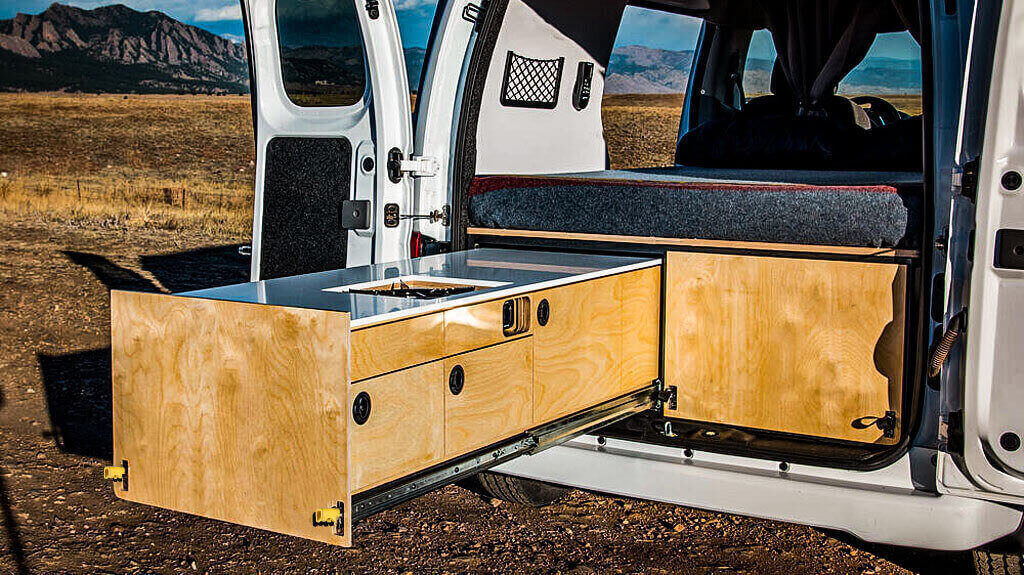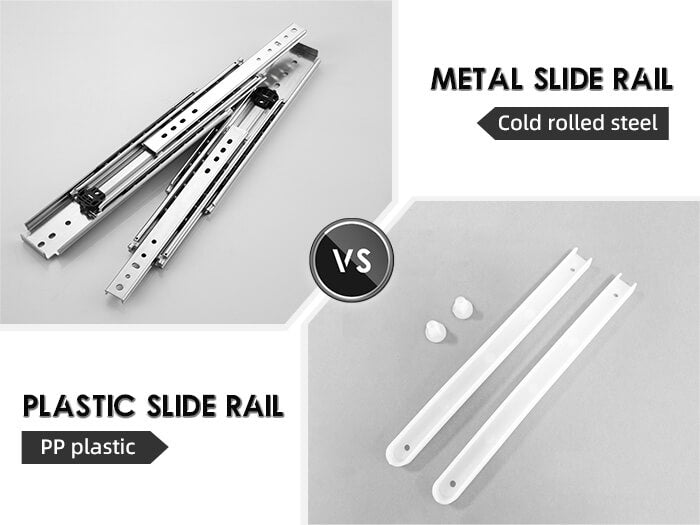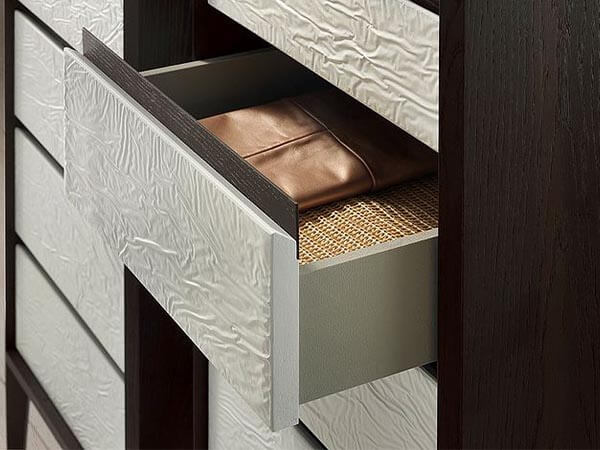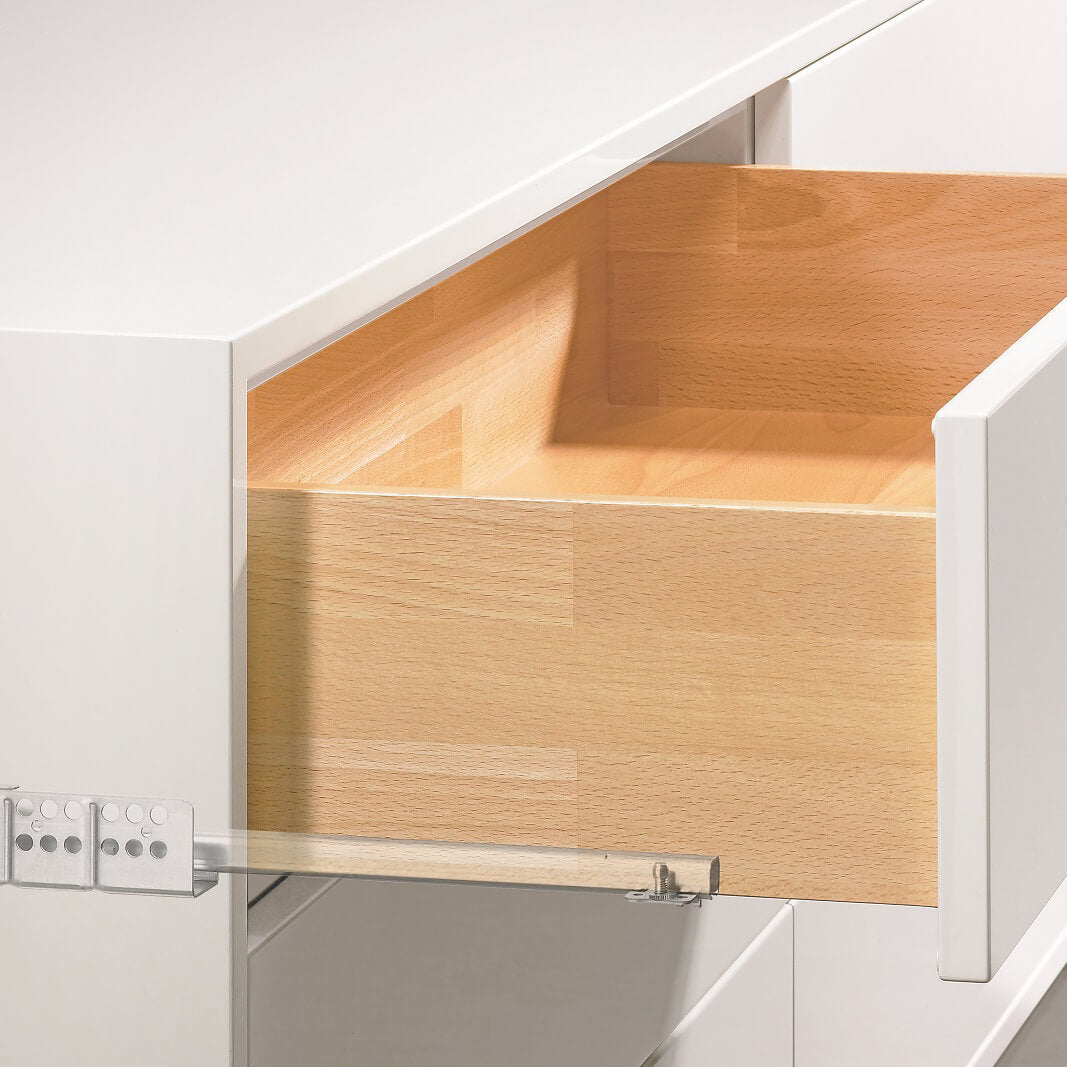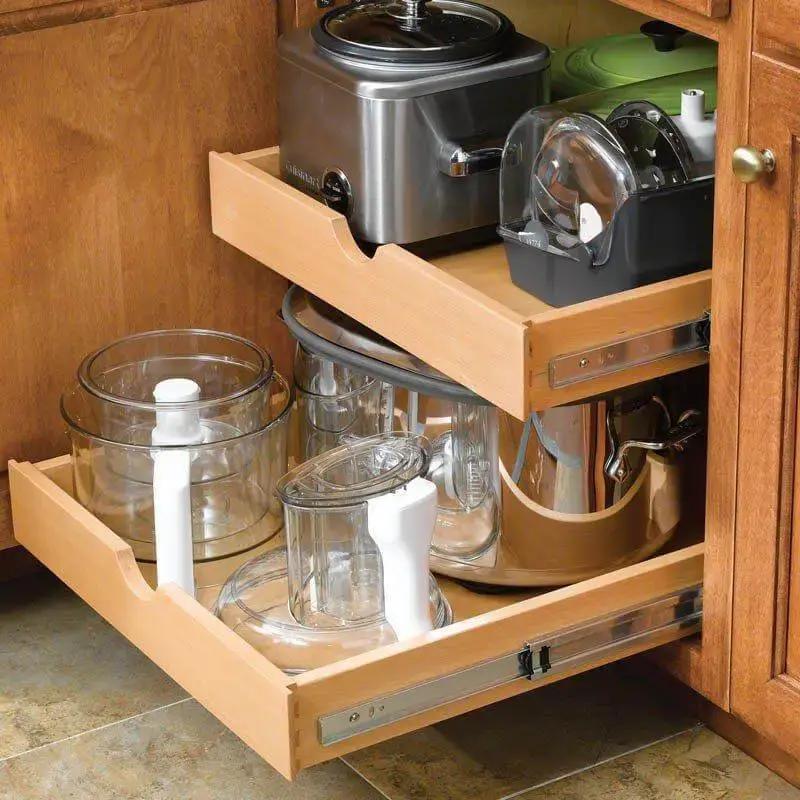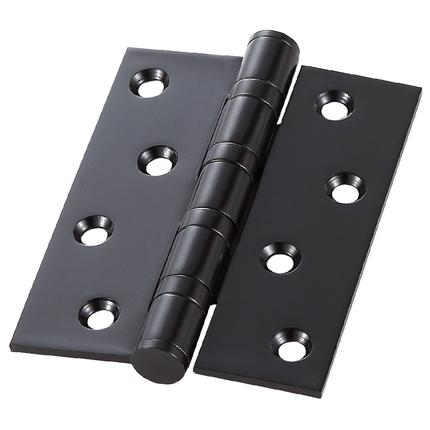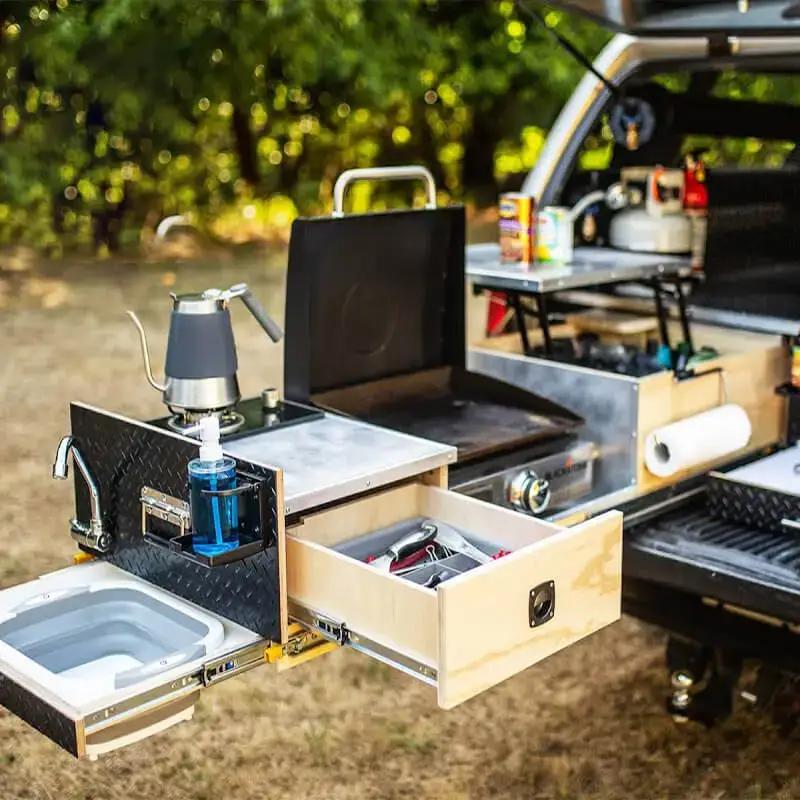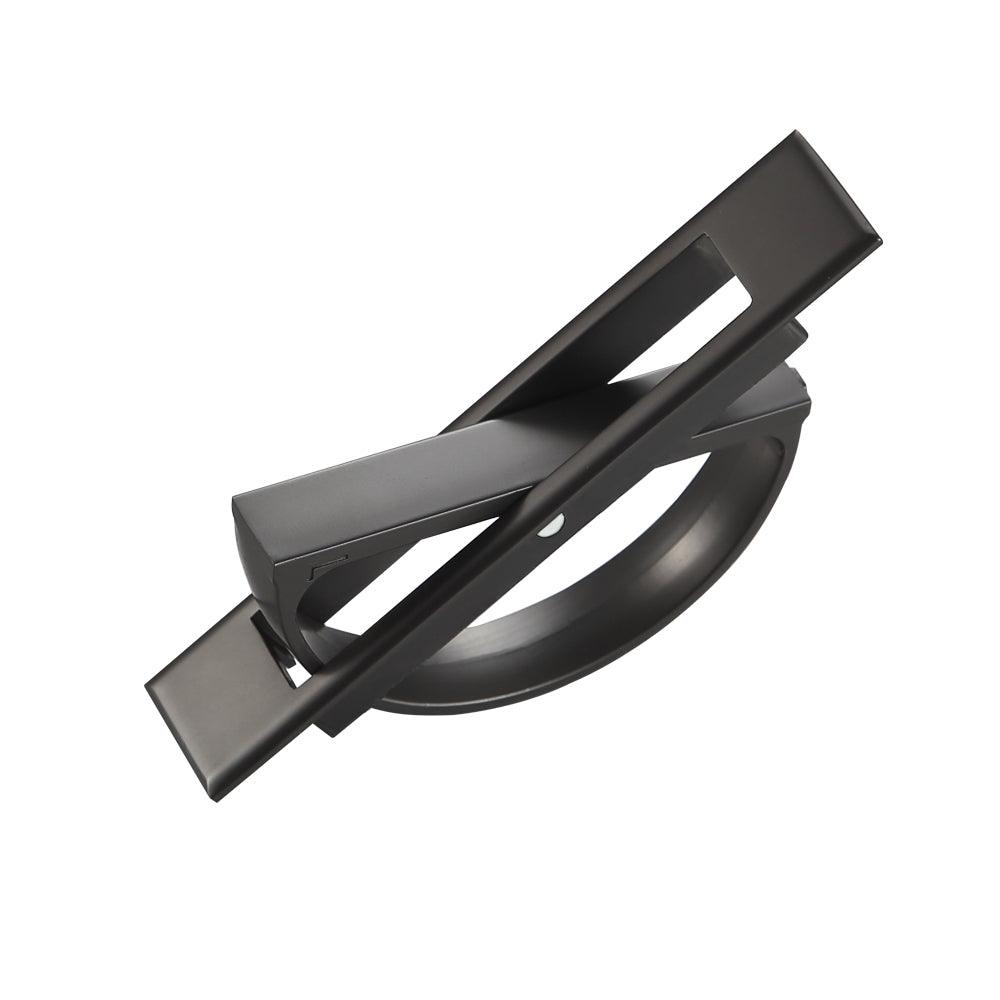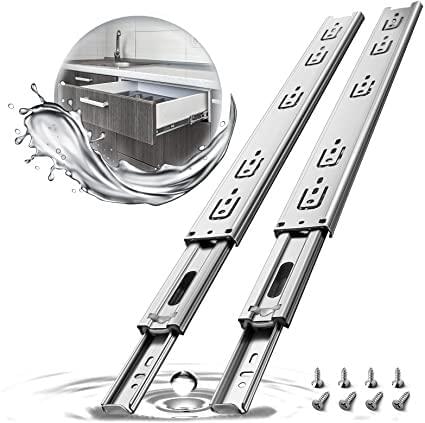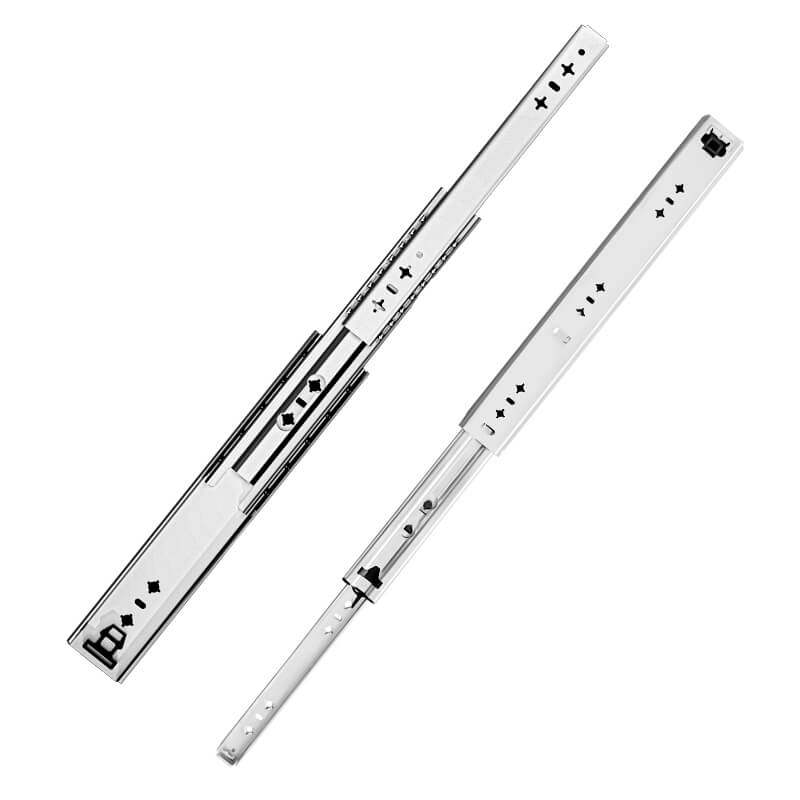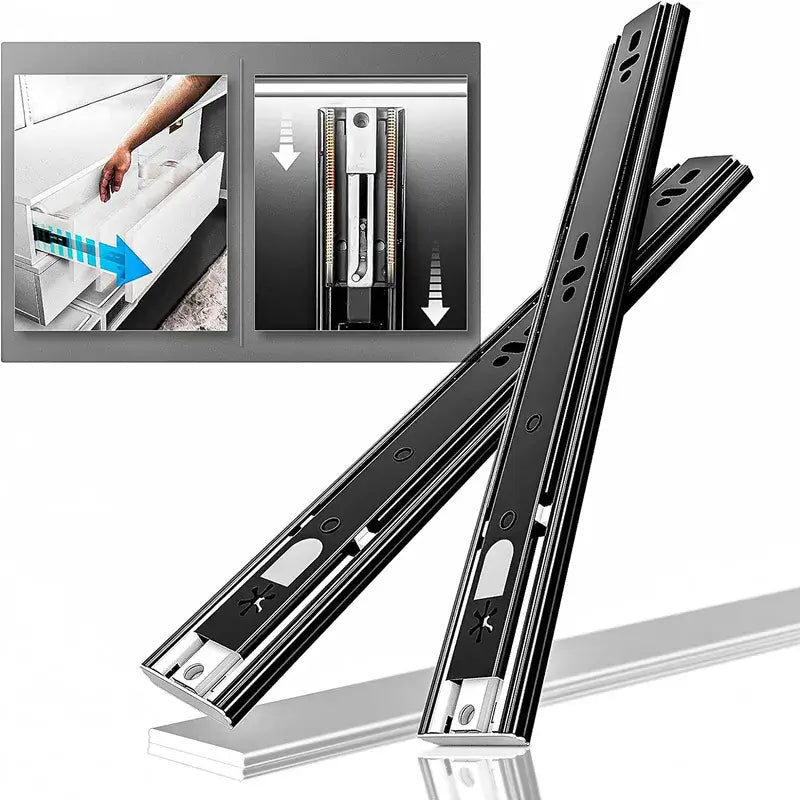In the world of furniture design and functionality, drawer slides play a crucial role in ensuring smooth and effortless movement of drawers. Whether you're building new furniture or upgrading an existing piece, choosing the right drawer slides is essential for optimal performance. One common question that arises during the selection process is whether the drawer slides should be longer or shorter than the drawer itself.
In this blog post, we will delve into this topic and explore the factors that should be considered when deciding on the appropriate slide length for your drawers. We will discuss the importance of matching slide length with drawer size and weight, as well as examine the impact on drawer extension and accessibility. Additionally, we will weigh the pros and cons of longer and shorter drawer slides, helping you make an informed decision based on your specific needs and preferences.
Whether you're a DIY enthusiast, a furniture designer, or simply someone looking to optimize the functionality of your drawers, this blog post will provide valuable insights and guidance. By the end of this article, you will have a better understanding of whether longer or shorter drawer slides are the ideal choice for your project, ensuring that your drawers operate smoothly and efficiently. Let's dive in and explore this intriguing topic further.
- Understanding Drawer Slides and Their Purpose
- Factors to Consider When Choosing Drawer Slides
- Longer Drawer Slides: Pros and Cons
- Shorter Drawer Slides: Pros and Cons
- Finding the Right Balance: Considering Drawer Slide Length
- Conclusion
- Frequently Asked Questions
1. Understanding Drawer Slides and Their Purpose

Drawer slides are mechanical hardware components that facilitate the smooth opening and closing of drawers in furniture. They are designed to provide support, stability, and controlled movement for drawers, enhancing their functionality and usability. Drawer slides consist of two main components: the drawer member, which attaches to the sides of the drawer, and the cabinet member, which is mounted inside the furniture carcass or cabinet.
The primary purpose of drawer slides is to allow easy access to the contents of the drawer while maintaining structural integrity and stability. They ensure that the drawer glides smoothly and quietly, eliminating the need for excessive force or jarring movements. By incorporating drawer slides into furniture design, you can enhance the experience by providing seamless and effortless operation of the drawers.
Drawer slides come in various types, including ball-bearing slides, roller slides, and European slides, each offering unique features and benefits. These slides typically consist of metal components, such as steel or aluminum, which provide durability and strength to withstand the weight and movement of the drawers.
The mechanism of drawer slides involves ball bearings or rollers that enable the smooth sliding motion. The ball bearings or rollers reduce friction, allowing the drawer to open and close with minimal effort. Some advanced drawer slides even incorporate features like soft-close or self-closing mechanisms, providing a controlled and gentle closing action to prevent slamming and protect the drawer contents.
In addition to their functional aspects, drawer slides also contribute to the aesthetic appeal of furniture. They are available in various finishes and designs, allowing you to choose options that complement the overall style and theme of your furniture piece.
Overall, drawer slides play a vital role in the usability, convenience, and longevity of drawers. Understanding their purpose and functionality is essential for selecting the right type and size of slides for your specific application. In the following sections, we will explore the factors to consider when choosing drawer slides, focusing specifically on whether they should be longer or shorter than the drawer itself.
2. Factors to Consider When Choosing Drawer Slides
When it comes to selecting drawer slides, several key factors should be taken into consideration to ensure optimal performance and functionality. Let's explore these factors in detail:
- Drawer Size and Weight:
Importance of matching drawer size with appropriate slide length: The size of the drawer is a crucial factor in determining the length of the drawer slides. Ideally, the slides should be long enough to provide sufficient support and extension for the drawer. Using slides that are too short may result in limited access to the drawer contents or increased stress on the slide mechanism.
How weight affects the choice of slide length: The weight of the drawer is another crucial consideration. Heavier drawers require slides that can handle the load without compromising smooth operation or causing sagging. Using slides that are too short for a heavy drawer can lead to excessive strain and may lead to premature wear and failure of the slide system.
- Drawer Extension and Accessibility:
Benefits of full-extension drawer slides: Full-extension slides allow the drawer to fully extend out of the cabinet, providing maximum accessibility and visibility to the drawer contents. This feature is especially useful when you need to access items at the back of the drawer. Consider whether full-extension slides are necessary for your specific application and whether the length of the slides supports the desired extension.
Considerations for accessibility and ease of use: Think about how easily you want to access the contents of the drawer. Longer slides can make it easier to reach items, especially in deeper drawers. However, keep in mind that if the slides are too long, they may protrude too far from the cabinet when fully extended, potentially obstructing walkways or other furniture.
- Drawer Clearance and Space Optimization:
Determining slide length based on available clearance: Measure the space available inside the cabinet or furniture carcass to ensure that the chosen slide length fits properly. Consider any obstructions or limitations that may affect the choice of slide length.
Maximizing space utilization with longer or shorter slides: Depending on the overall design and space constraints, you may opt for longer or shorter drawer slides. Longer slides can allow for larger drawers, maximizing storage capacity. On the other hand, shorter slides may be preferable for space-limited areas or furniture pieces where compactness is a priority.
Taking these factors into account will help you make an informed decision when choosing the appropriate length of drawer slides for your project. In the next sections, we will explore the advantages and disadvantages of longer and shorter drawer slides, providing a deeper understanding of their implications on drawer functionality and overall furniture design.
3. Longer Drawer Slides: Pros and Cons

Longer drawer slides offer certain advantages and disadvantages that should be considered when deciding on the appropriate slide length for your drawers. Let's explore the pros and cons of longer drawer slides:
- Advantages of Longer Drawer Slides:
Increased accessibility and visibility of drawer contents: Longer slides allow the drawer to extend further out of the cabinet, providing easier access to items at the back of the drawer. This can be especially beneficial for deep or wide drawers where accessing items at the rear can be challenging with shorter slides.
Easier cleaning and maintenance of drawer and slide system: With longer slides, you can fully expose the interior of the drawer and easily clean or perform maintenance tasks, such as lubricating the slide mechanism. This accessibility can contribute to the longevity and smooth operation of your drawer system.
- Drawbacks of Longer Drawer Slides:
Potential for decreased stability and increased sagging: Longer slides may introduce a higher risk of drawer instability, especially when dealing with heavy or loaded drawers. The extended length can lead to increased leverage, causing the drawer to sag or tilt when fully extended. It's crucial to consider the weight capacity and load rating of the slides to ensure they can handle the load without compromising stability.
Limited space for larger drawers in certain furniture designs: Longer slides require sufficient space inside the cabinet or furniture carcass to accommodate the extended length when the drawer is fully open. In some furniture designs with space constraints, longer slides may not be feasible without compromising the overall structure or functionality of the furniture piece.
Understanding the pros and cons of longer drawer slides allows you to assess whether they align with your specific requirements and constraints. If the benefits of increased accessibility and ease of maintenance outweigh the drawbacks, longer slides may be a suitable choice for your project. However, it's crucial to consider the weight, stability, and available space to ensure the proper functioning and longevity of your drawers.
In the next section, we will explore the advantages and disadvantages of shorter drawer slides, providing further insights into their implications on drawer performance and furniture design.
4.Shorter Drawer Slides: Pros and Cons
Shorter drawer slides offer certain advantages and disadvantages that should be considered when deciding on the appropriate slide length for your drawers. Let's explore the pros and cons of shorter drawer slides:
- Advantages of Shorter Drawer Slides:
Increased stability and reduced sagging: Shorter slides provide better support and stability for the drawer, especially for heavy or loaded drawers. They minimize the risk of sagging or tilting when the drawer is fully extended, ensuring a smooth and stable operation.
Space-saving design: Shorter slides are beneficial for furniture pieces with limited space or compact designs. They allow for a more streamlined and efficient use of space, making them suitable for small cabinets, closets, or narrow furniture pieces.
- Drawbacks of Shorter Drawer Slides:
Limited accessibility to back of the drawer: Shorter slides may restrict access to items at the back of the drawer, especially in deeper or wider drawers. It may be more challenging to reach or organize items towards the rear, requiring more effort or repositioning of the drawer to access them fully.
Potential for reduced visibility: With shorter slides, the drawer may not extend as far out of the cabinet, limiting visibility and making it harder to see or retrieve items stored at the back. This can be a disadvantage if you require a clear view and easy access to all contents of the drawer.
While shorter drawer slides offer increased stability and space-saving benefits, they may limit accessibility to the back of the drawer and reduce visibility. It's important to assess these factors and consider how they align with your specific requirements and furniture design.
In certain scenarios, such as for heavy or space-limited drawers, shorter slides can be a practical choice. However, if accessibility and full visibility are critical, longer slides may be a more suitable option.
Ultimately, the decision on whether drawer slides should be longer or shorter depends on a careful evaluation of your needs, preferences, and the specific characteristics of your project. By considering the pros and cons of both options, you can make an informed choice that optimizes the functionality and usability of your drawers.
5. Finding the Right Balance: Considering Drawer Slide Length
After exploring the pros and cons of longer and shorter drawer slides, it's essential to find the right balance between drawer size, slide length, and furniture design. Consider the following factors when determining the appropriate slide length for your drawers:
Drawer Size and Weight: Assess the dimensions and weight of your drawers. For larger and heavier drawers, longer slides may be necessary to provide adequate support and prevent sagging. Smaller and lighter drawers, on the other hand, may work well with shorter slides.
Accessibility and Space: Evaluate how easily you want to access the contents of your drawers and the available space within the furniture piece. Longer slides offer greater accessibility to items at the back of the drawer, but they also require more space when fully extended. Consider the furniture's location, adjacent walkways, and any potential obstructions that may affect the choice of slide length.
Furniture Design and Style: Take into account the overall design and style of your furniture. Longer slides can be beneficial for contemporary designs that prioritize accessibility and sleek aesthetics. Shorter slides may be more suitable for compact or space-saving furniture designs.
Load Capacity: Ensure that the chosen slide length can support the weight and load capacity of your drawers. Longer slides generally have higher load ratings, but it's important to verify their capacity to handle the specific weight requirements of your drawers.
Experience: Consider the intended s of the furniture. If the drawers will be frequently accessed by individuals with limited mobility or reach, longer slides can provide a more -friendly experience. For general use, strike a balance between accessibility and practicality.
Finding the right balance between drawer size and slide length is crucial for optimal performance, stability, and satisfaction. Assess your specific requirements, constraints, and preferences to determine the most suitable slide length for your project. Additionally, consult the manufacturer's guidelines and recommendations for the selected drawer slides to ensure proper compatibility and performance.
In the next section, we will provide a summary of the key points discussed in this blog post and offer a final recommendation on whether drawer slides should be longer or shorter than the drawer.

6. Conclusion
Choosing the appropriate length of drawer slides is a crucial decision that impacts the functionality, accessibility, and overall performance of your drawers. After examining the factors and weighing the pros and cons of longer and shorter drawer slides, it's clear that finding the right balance is key.
Consider the size and weight of your drawers, ensuring that the slide length provides sufficient support and stability. Assess the accessibility and space requirements, keeping in mind the need to easily reach the contents of the drawers while considering any space constraints or obstructions. Additionally, take into account the design and style of your furniture, as well as the load capacity of the selected drawer slides.
While longer drawer slides offer increased accessibility and visibility of the drawer contents, they may introduce stability issues and require more space. Shorter drawer slides, on the other hand, provide stability and work well in space-limited areas but may restrict access to the back of the drawer.
Using the longest slide possible for your application, without exceeding the drawer depth into the cabinet, is generally recommended. This ensures that you maximize the extension and accessibility of the drawer while maintaining proper alignment and stability.
In the end, the decision on whether drawer slides should be longer or shorter than the drawer depends on your specific needs, preferences, and constraints. It's crucial to strike a balance between accessibility, stability, space utilization, and overall design.
To make an informed choice, thoroughly assess the requirements of your project, consult manufacturer guidelines, and consider seeking expert advice if needed. By doing so, you can ensure that your drawers operate smoothly, efficiently, and align with your desired functionality and aesthetic vision.
Remember, every furniture project is unique, and the ideal slide length may vary depending on the specific circumstances. With careful consideration and understanding of your requirements, you'll be able to select the perfect drawer slides that enhance the overall usability and satisfaction of your furniture.
7. Frequently Asked Questions
Why are drawer slides so expensive?
Drawer slides can be relatively expensive due to several factors. Firstly, quality drawer slides are typically made from durable materials like steel or aluminum, which contribute to their longevity and smooth operation. The cost of these materials, along with the precision manufacturing processes involved, adds to the overall price. Additionally, reputable manufacturers invest in research and development to enhance slide functionality, incorporate features like soft-close mechanisms, and improve overall product quality. These factors, combined with the demand for reliable and high-performing drawer slides, contribute to their pricing.
What are the different types of drawer slides?
There are several types of drawer slides available on the market. Some common types include:
Ball-Bearing Slides: These slides use ball bearings to facilitate smooth movement and provide weight-bearing capabilities.
Roller Slides: Roller slides utilize rollers instead of ball bearings, offering excellent load capacity and smooth operation.
European Slides: Also known as undermount slides, these slides are concealed beneath the drawer, providing a sleek and clean look.
Side-Mount Slides: Side-mount slides are attached to the sides of the drawer and cabinet, offering ease of installation and versatility.
Center-Mount Slides: These slides mount beneath the center of the drawer and are typically used for lightweight applications.
Each type has its own advantages and considerations, so it's important to choose the type that best suits your specific needs and furniture design.
What length of drawer slides do I need?
Determining the appropriate length of drawer slides depends on various factors, including the size of your drawers, desired extension, available space, and functionality requirements. To determine the length, measure the depth of the drawer and consider the clearance within the cabinet or furniture piece. For full-extension slides, the length should ideally match or exceed the depth of the drawer. However, it's essential to consider any limitations or obstructions that may affect the choice of slide length, such as adjacent furniture or walkways. Additionally, refer to the manufacturer's recommendations and load ratings to ensure the selected slide length can handle the weight of your drawers.
Can I cut drawer slides to a custom length?
In general, it is not recommended to cut drawer slides to a custom length. Drawer slides are designed and manufactured to specific dimensions, and altering their length may compromise their functionality and structural integrity. Cutting slides can affect the smooth operation, load capacity, and overall stability of the drawer system. It is best to choose slides that match the desired length or explore alternative slide options that are available in the desired dimensions.

